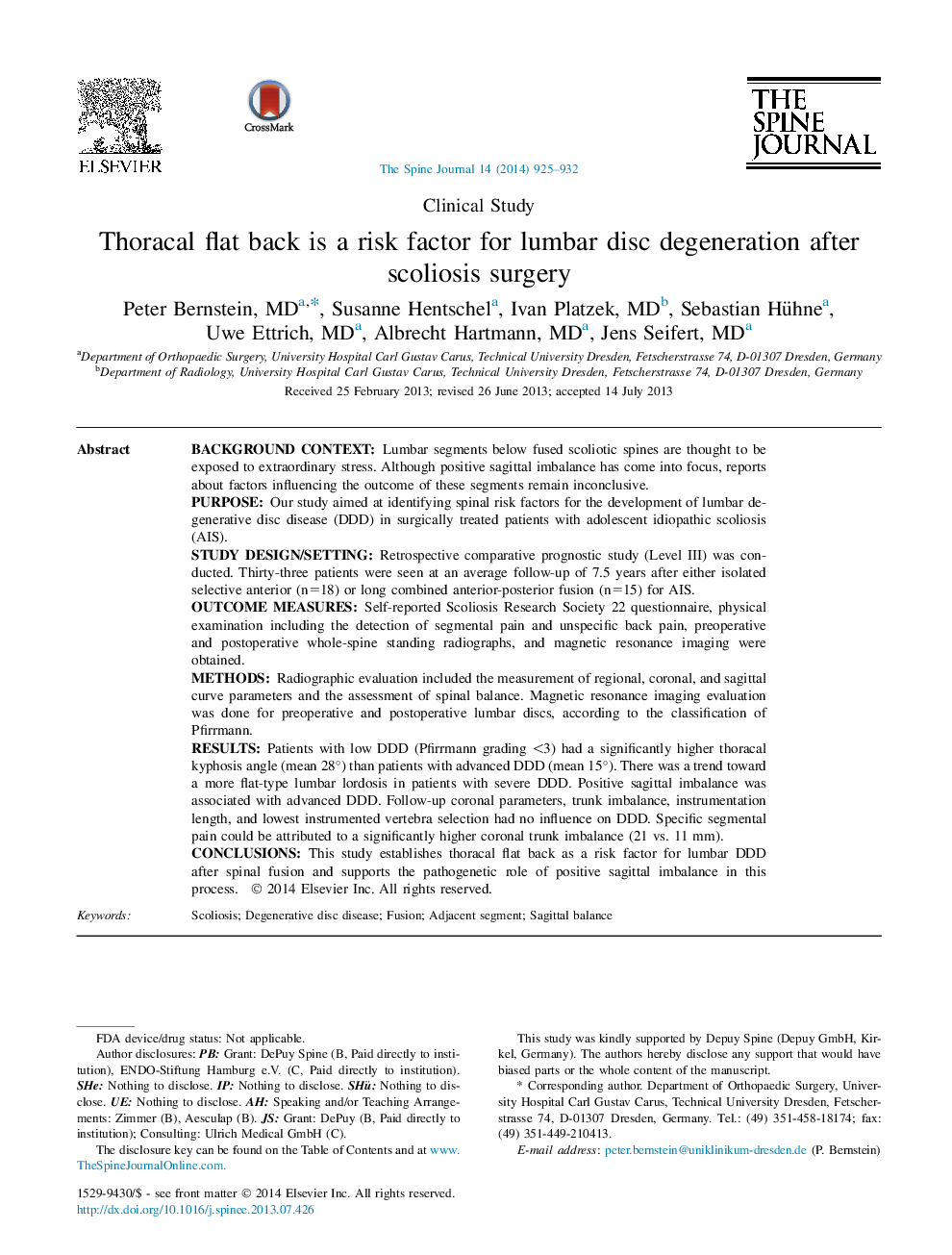| کد مقاله | کد نشریه | سال انتشار | مقاله انگلیسی | نسخه تمام متن |
|---|---|---|---|---|
| 4097767 | 1268598 | 2014 | 8 صفحه PDF | دانلود رایگان |
Background contextLumbar segments below fused scoliotic spines are thought to be exposed to extraordinary stress. Although positive sagittal imbalance has come into focus, reports about factors influencing the outcome of these segments remain inconclusive.PurposeOur study aimed at identifying spinal risk factors for the development of lumbar degenerative disc disease (DDD) in surgically treated patients with adolescent idiopathic scoliosis (AIS).Study design/settingRetrospective comparative prognostic study (Level III) was conducted. Thirty-three patients were seen at an average follow-up of 7.5 years after either isolated selective anterior (n=18) or long combined anterior-posterior fusion (n=15) for AIS.Outcome measuresSelf-reported Scoliosis Research Society 22 questionnaire, physical examination including the detection of segmental pain and unspecific back pain, preoperative and postoperative whole-spine standing radiographs, and magnetic resonance imaging were obtained.MethodsRadiographic evaluation included the measurement of regional, coronal, and sagittal curve parameters and the assessment of spinal balance. Magnetic resonance imaging evaluation was done for preoperative and postoperative lumbar discs, according to the classification of Pfirrmann.ResultsPatients with low DDD (Pfirrmann grading <3) had a significantly higher thoracal kyphosis angle (mean 28°) than patients with advanced DDD (mean 15°). There was a trend toward a more flat-type lumbar lordosis in patients with severe DDD. Positive sagittal imbalance was associated with advanced DDD. Follow-up coronal parameters, trunk imbalance, instrumentation length, and lowest instrumented vertebra selection had no influence on DDD. Specific segmental pain could be attributed to a significantly higher coronal trunk imbalance (21 vs. 11 mm).ConclusionsThis study establishes thoracal flat back as a risk factor for lumbar DDD after spinal fusion and supports the pathogenetic role of positive sagittal imbalance in this process.
Journal: The Spine Journal - Volume 14, Issue 6, 1 June 2014, Pages 925–932
